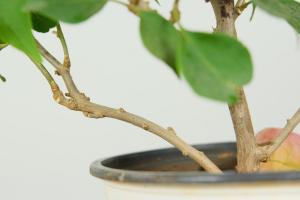What Causes Tomato Plant Leaves to Turn Purple
Tomatoes are one of the most popular vegetables grown in gardens around the world. They are relatively easy to grow, but sometimes, tomato plants develop symptoms that can be confusing, such as leaves turning purple. In this article, we will explore the different reasons why tomato plant leaves may turn purple.
Phosphorus Deficiency
One common reason for tomato plant leaves to turn purple is a lack of phosphorus. Phosphorus is one of the essential nutrients needed by plants for proper growth and development. When a plant lacks phosphorus, the leaves may turn purple, and the plant may exhibit stunted growth. To fix this problem, gardeners can use a phosphorus-rich fertilizer or add compost to the soil, which can help replenish the missing nutrient.
Potassium Deficiency
Another reason for tomato plant leaves to turn purple is a deficiency in potassium. Potassium is another essential nutrient that tomato plants need to grow and develop properly. When a tomato plant lacks potassium, it may exhibit symptoms such as yellowing leaves, brown leaf edges, and purple leaves. To fix this problem, gardeners can use a potassium-rich fertilizer or add compost to the soil that can help replenish the missing nutrient.
Sunscald
Tomato plants need sunlight to grow and develop properly, but too much direct sunlight can cause sunscald. Sunscald can cause tomato plants to develop purple leaves, as well as brown or yellow patches on the fruit. To prevent sunscald, gardeners can provide shade for the tomato plant during the hottest part of the day or use reflective mulch to help reduce the amount of direct sunlight that the plant receives.
Cold Weather
Tomato plants grow best in warm weather, and if the temperature drops too low, the plant may develop purple leaves. Cold weather can cause the plant's metabolism to slow down, which can cause the leaves to turn purple. To prevent this problem, gardeners can cover the plants with blankets or cloths when the temperature drops, or use a greenhouse or a hoop house to keep the temperature stable.
Pest Infestations
Finally, pest infestations can also cause tomato plant leaves to turn purple. Aphids and spider mites are two common pests that can damage tomato plants, causing the leaves to turn purple due to the stress caused by the feeding of these pests. To prevent pest infestations, gardeners can use insecticidal soaps or neem oil and focus on maintaining a healthy garden ecosystem.
Conclusion
Tomato plant leaves turning purple can be a sign of several different problems, including phosphorus or potassium deficiency, sunscald, cold weather, or pest infestations. Gardeners can take steps to fix these problems by using fertilizers or compost to replenish missing nutrients, providing shade during hot weather, protecting the plants during cold weather, and preventing pest infestations by maintaining a healthy garden ecosystem.

 how many times do yo...
how many times do yo... how many planted tre...
how many planted tre... how many pine trees ...
how many pine trees ... how many pecan trees...
how many pecan trees... how many plants comp...
how many plants comp... how many plants can ...
how many plants can ... how many plants and ...
how many plants and ... how many pepper plan...
how many pepper plan...






























